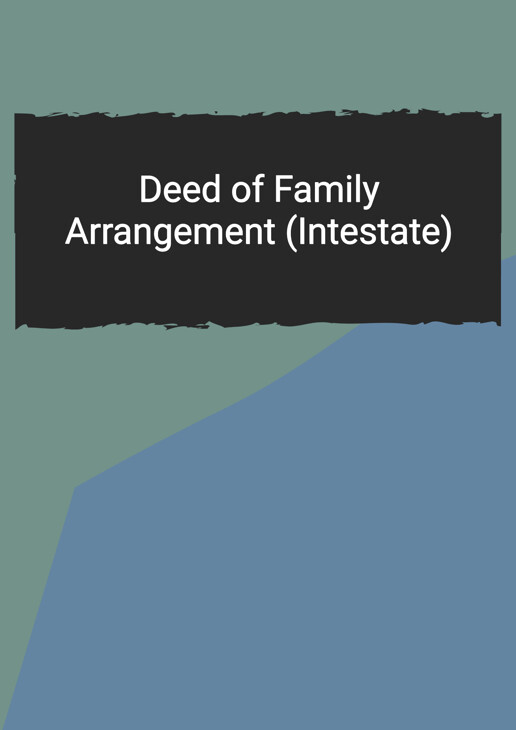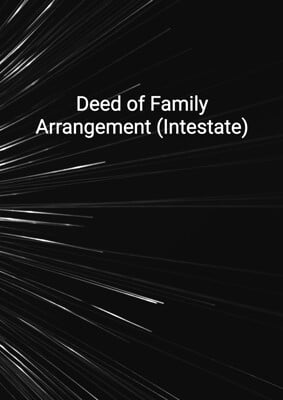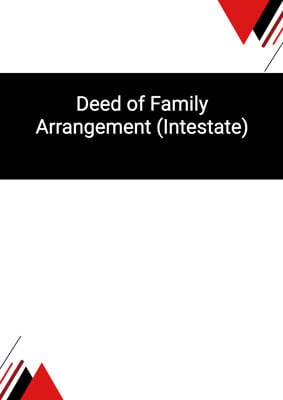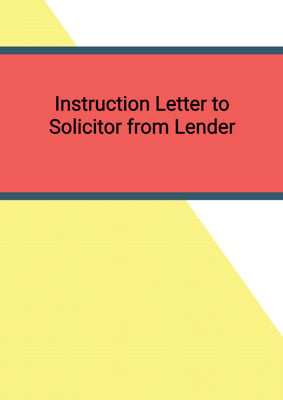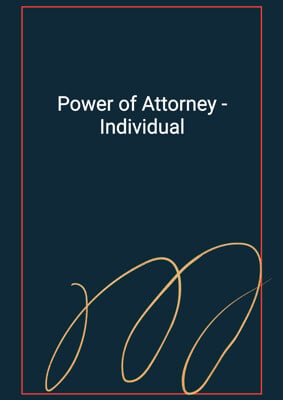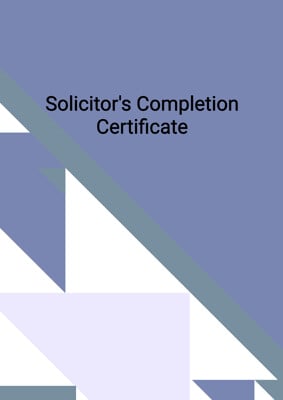How to Tailor the Document for Your Need?
01
Create Document
Fill in the details of the parties. You can click the "Fill with Member’s Information" button to complete it with information saved to your account.
02
Fill Information
Please fill in any additional information by following the step-by-step guide on the left hand side of the preview document and click the "Next" button.
03
Get Document
When you are done, click the "Get Document" button and you can download the document in Word or PDF format.
04
Review Document
The document should be signed by the authorised signatory (or directors of a company) and witnessed to complete the formality.
Document Preview
Document Description
The Deed of Family Arrangement (Intestate) is a legal document that is entered into by the parties involved to settle the distribution of the estate of a deceased person who died intestate, meaning without leaving a will. This document is of utmost importance as it provides a clear and legally binding agreement among the beneficiaries and the administrator of the estate.
The entire document consists of several sections that outline the background, purpose, and terms of the arrangement. The first section of the document provides a brief introduction, stating that it is a deed of family arrangement entered into on the current date between the first beneficiary, second beneficiary, third beneficiary, and the administrator. It also defines the parties involved and their respective roles.
The second section of the document provides a detailed background of the deceased, stating that he died intestate and survived by his lawful and natural children, as well as his lawful widow. It also mentions that the deceased was the registered owner of a property, which is described in the document.
The third section states that the letters of administration of the estate were granted to the administrator by the court. It further mentions that all estate duties, funeral expenses, and debts of the deceased have been paid by the administrator without using the proceeds from the sale of the property.
The fourth section of the document refers to an assignment made between the administrator and the purchaser, where the property was assigned for a specific consideration. It also mentions the net proceeds of the sale, which is the amount received after deducting costs and expenses.
The fifth section states that the children and the widow are the only parties entitled to share in the distribution of the estate. It also clarifies that each party holds their share for their absolute use and free from encumbrances.
The sixth section of the document highlights the intention of the children to assign all their rights, interests, and benefits in the net proceeds of the sale to the widow. This section also authorizes the administrator to release and pay the children's share to the widow, while indemnifying the administrator and the estate from any claims or demands.
The document concludes with the signatures of the first beneficiary, second beneficiary, third beneficiary, and the administrator, along with the signatures of witnesses or witnessing solicitors.
Each section of the document serves a specific purpose and provides essential information to ensure a fair and lawful distribution of the estate. It is crucial for all parties involved to carefully review and understand the contents of the document before signing it.
How to use this document?
To effectively use the Deed of Family Arrangement (Intestate), follow these steps:
1. Understand the purpose: Familiarize yourself with the purpose of the document, which is to settle the distribution of the estate of a deceased person who died intestate. This document ensures a fair and legally binding agreement among the beneficiaries and the administrator.
2. Gather necessary information: Collect all the required information, including the names and addresses of the beneficiaries (first beneficiary, second beneficiary, and third beneficiary) and the administrator. Ensure that the information is accurate and up to date.
3. Identify the property: Clearly identify the property that is part of the estate and describe it accurately in the document. This will help avoid any confusion or disputes regarding the property.
4. Review the letters of administration: Verify that the administrator has been granted the letters of administration by the court. This ensures that the administrator has the legal authority to handle the estate and distribute the proceeds.
5. Calculate the net proceeds of sale: Determine the net proceeds of the sale of the property by subtracting the costs, disbursements, and expenses associated with the assignment. This amount will be mentioned in the document and will form the basis for the distribution.
6. Seek legal advice if necessary: If you have any doubts or concerns about the document or the distribution of the estate, it is advisable to consult with a legal professional. They can provide guidance and ensure that your rights and interests are protected.
7. Sign the document: Once all parties have reviewed and agreed upon the contents of the document, sign it in the presence of witnesses or witnessing solicitors. Ensure that all signatures are clear and legible.
8. Keep copies for reference: Make copies of the signed document for all parties involved. These copies will serve as a reference in case any disputes or issues arise in the future.
By following these steps, you can effectively use the Deed of Family Arrangement (Intestate) to settle the distribution of the estate and ensure a fair and legally binding agreement among the beneficiaries and the administrator.
Not the right document?
Don’t worry, we have thousands of documents for you to choose from:
